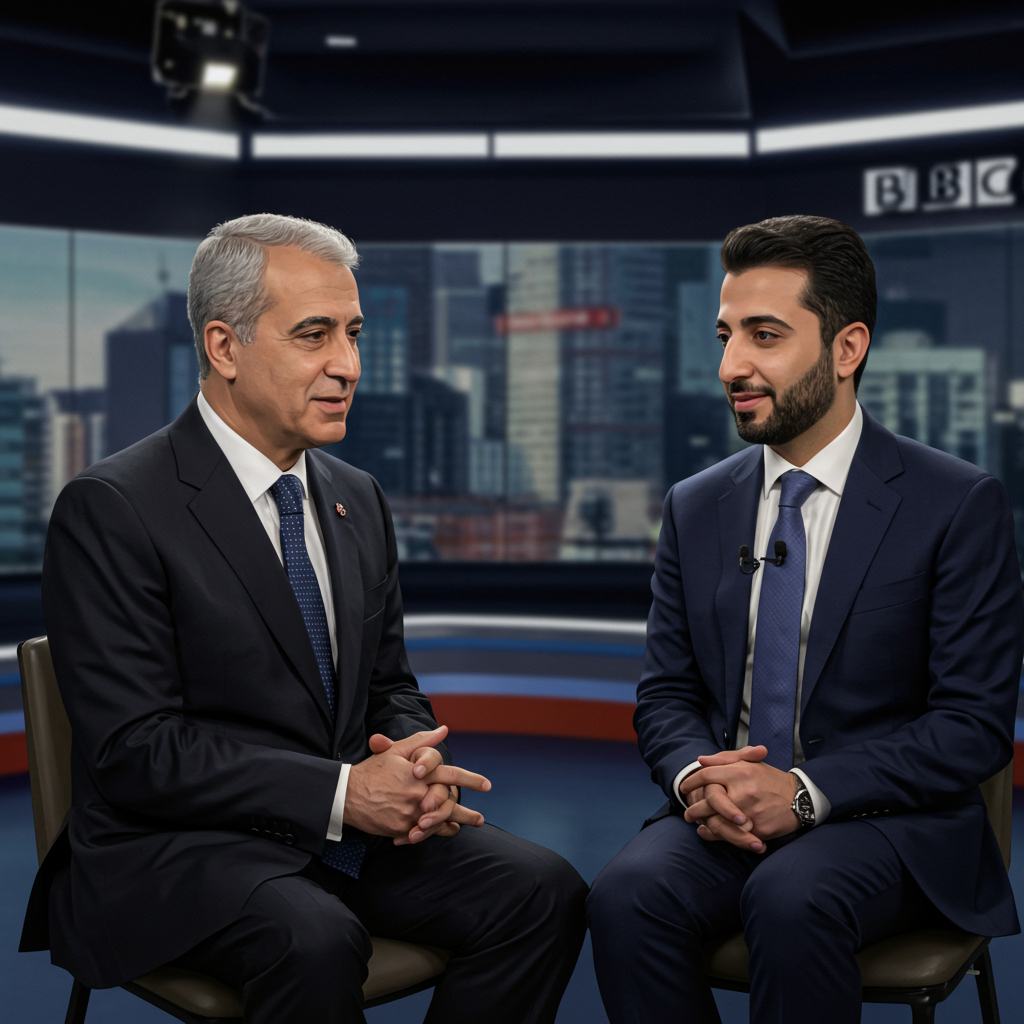A former high-ranking official from Israel’s intelligence agency, Mossad, has shed light on the critical role of technology in targeted operations against Iranian figures. Rami Igra, who previously served as Mossad’s deputy chief, discussed these sensitive matters in a recent interview with BBC Persian’s special correspondent, Kasra Naji. His insights underscore the increasing reliance on advanced technological capabilities in modern covert actions and intelligence operations.
Igra’s statements provide a rare glimpse into the strategic thinking and methods employed by Israeli intelligence. He specifically highlighted how innovation and sophisticated technical systems were instrumental in the successful strikes targeting senior commanders within Iran’s Islamic Revolutionary Guard Corps (IRGC). This approach suggests a shift towards leveraging technological superiority to achieve strategic objectives with precision.
Technology’s Edge in Intelligence Operations
According to the former deputy chief, the success of recent actions against key Iranian military figures hinged significantly on advanced technological tools. Igra pointed specifically to “very sophisticated guiding systems” as playing an important role. This phrase suggests the use of highly accurate navigation and targeting technology, likely integrated into various platforms such as drones, precision-guided munitions, or even cyber-assisted targeting mechanisms.
The deployment of such sophisticated technology allows for pinpoint accuracy. This minimizes collateral damage while maximizing the effectiveness of eliminating specific high-value targets. In the complex and often clandestine landscape of the Israeli-Iranian shadow conflict, the ability to execute precise strikes is paramount. It enables Israel to project power and disrupt adversarial networks with reduced risk compared to conventional military engagements. The reliance on tech highlights a strategic adaptation to the challenges of asymmetric warfare and covert operations.
The June 13th Strike: A Case Study
Igra’s comments referenced a specific incident on June 13th, which served as a notable example of this technology in action. During this operation, Israel targeted and killed several prominent Iranian military and scientific personnel. The list of those reportedly eliminated includes exceptionally high-ranking figures.
Among the casualties were the Armed Forces Chief of Staff and the IRGC Chief of Staff, two pivotal figures in Iran’s military hierarchy. Additionally, the head of the IRGC missile and aerospace divisions was killed. This individual’s role was crucial to Iran’s ballistic missile program and drone capabilities. The strike also reportedly resulted in the deaths of a number of Iranian nuclear scientists. Targeting both military leadership and scientific experts suggests a strategy aimed at disrupting multiple critical aspects of Iran’s security and development programs simultaneously. The precision required to eliminate specific individuals in targeted strikes necessitates advanced technological capabilities, aligning with Igra’s observations about sophisticated guiding systems.
Attribution and the Shadow War
Following these high-profile killings, Iran publicly attributed the success of the operations to Mossad operatives. Specifically, Iran claimed the strikes were carried out by agents working covertly inside the country. This attribution points to the deep penetration capabilities often associated with intelligence agencies like Mossad.
Operating within hostile territory requires immense planning, resources, and coordination. It involves complex networks of human intelligence (HUMINT) alongside technical intelligence (TECHINT). The seamless integration of information gathered by agents on the ground with advanced targeting technology is likely what enables such precise and impactful strikes. This dynamic is characteristic of the long-standing “shadow war” fought between Israel and Iran, a conflict characterized by covert actions, cyberattacks, and proxy engagements rather than overt military confrontation. Igra’s comments reinforce the perception that operations inside Iran are a key component of this ongoing low-intensity conflict.
Strategic Impact: A Former Chief’s Assessment
Despite the seemingly significant achievement of eliminating top military and scientific figures, Rami Igra expressed a notably understated perspective on their long-term strategic impact. He stated he was “not impressed” by the killings. This viewpoint might seem counterintuitive given the seniority of the targets.
Igra explained his reasoning, suggesting that such losses, while impactful in the short term, do not fundamentally cripple Iran’s military or its strategic capabilities. He is quoted as saying, “It doesn’t change the fact that behind that top brass, there’s a whole army and people are expendable at the end of the day.” This statement highlights a pragmatic, perhaps even cynical, view of large organizations like the IRGC. It suggests that Iran possesses sufficient depth in personnel and structure to replace fallen leaders and scientists relatively quickly. From this perspective, decapitation strikes alone may not be sufficient to dismantle an adversary’s capabilities or alter its strategic trajectory in a lasting way. The focus might then shift to the continuous nature of the conflict and the need for ongoing technological and intelligence superiority.
The Evolving Landscape of Intelligence
Igra’s comments highlight how technology is transforming intelligence operations. Beyond traditional espionage and analysis, modern intelligence agencies are increasingly involved in enabling kinetic actions. This requires integrating intelligence gathering with sophisticated delivery systems. Precision guidance technology, drone capabilities, advanced surveillance, and cyber tools are no longer just support functions; they are central to executing missions.
The development and deployment of “very sophisticated guiding systems” involve cutting-edge research in areas like artificial intelligence, sensor technology, and navigation. Maintaining an edge in this domain is crucial for agencies operating in hostile environments where conventional military options are limited or undesirable. This technological arms race in the intelligence sphere means that capabilities are constantly evolving. What is cutting-edge today may be standard practice tomorrow, necessitating continuous innovation.
The Debate Over Targeted Killings
The effectiveness and ethics of targeted killings remain subjects of intense debate. Proponents argue they can prevent future attacks, disrupt terrorist or military networks, and pressure adversaries without resorting to full-scale war. Critics raise concerns about legality, potential for civilian casualties, and the risk of escalation or creating martyrs.
Igra’s perspective adds another dimension to this debate: the question of strategic effectiveness against resilient state or quasi-state actors. His view suggests that while technologically impressive and tactically successful, eliminating individuals might have limited long-term strategic impact if the underlying organization or state structure can absorb the loss and continue its functions. This underscores the complexity of modern conflict, where technological prowess must be weighed against political, social, and organizational resilience.
Frequently Asked Questions
What specific technology did the former Mossad official mention?
Rami Igra, the former deputy Mossad chief, highlighted the crucial role of technology and innovation. He specifically referred to “very sophisticated guiding systems.” This suggests advanced precision targeting and navigation technology used in executing specific operations against Iranian figures.
Which high-level Iranian officials were targeted in the described strikes?
The article mentions an operation on June 13th where several senior Iranian figures were killed. These included Iran’s Armed Forces Chief of Staff, the IRGC Chief of Staff, and the head of the IRGC missile and aerospace divisions. Several Iranian nuclear scientists were also reportedly killed in the same incident.
Why did the former Mossad official seem “not impressed” by the targeted killings?
Rami Igra stated he was “not impressed” because he believes eliminating top figures does not fundamentally change the overall strength or structure of the Iranian military and its organizations like the IRGC. His view is that the military is large (“a whole army”) and individuals are “expendable,” meaning replacements can likely fill the void, limiting the long-term strategic impact of such strikes.
Conclusion
The insights shared by former Mossad deputy chief Rami Igra underscore the central and growing role of advanced technology in Israel’s operations against Iran. His comments, particularly highlighting the use of sophisticated guiding systems, point to a strategic approach that leverages precision and innovation in the ongoing shadow conflict. While the June 13th strikes eliminated highly significant Iranian military and scientific targets, Igra’s pragmatic assessment serves as a reminder of the complex nature of strategic impact. Even with technological superiority, disrupting well-established state and military structures remains a long-term challenge. The ongoing dynamic between technological capability and organizational resilience continues to shape the landscape of intelligence and covert operations in the region.




